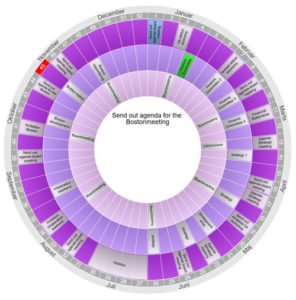
Efficient planning process
An efficient planning process is the one that includes not just designing or defining the plan but also the one that facilitates its execution. An efficient planning tool has certain inherent traits that enable it deliver superior performance. Among the essential qualities that an efficient planning tool must possess is a step by step guide to execute the plan. These are smaller elements of a much larger plans. By dividing the larger plan into smaller units, it becomes easy to execute and monitor them in an uncomplicated manner.
Plans, and especially strategic plans are usually complicated and perplexing due to the involvement of several elements in them. Executing them efficiently becomes difficult unless there is a mechanism that can divided them into smaller units that are simple in structure and easy to be executed.
It also allows for periodic review of these sub-plans and the overall plans. The efficacy of a plan can be revealed only after reviewing it. If it proves to be effective enough to achieve the desired objectives of an organisation, the plan can be called efficient.


But, without proper structuring and modelling of a plan, it becomes difficult to review it till the time the final output is achieved. However, at such a late stage, it might not be possible to rectify the errors or shortfalls of the plans without spending substantial amounts of time and resources on them.
Hence, it becomes critical to periodically review the plans when they are still being executed and it is possible only by using a planning tool that allows segregation of the larger plan into smaller bits that can then be monitored and reviewed periodically and further allows easy aggregation of these units.
Plandisc is a circular planning tool that makes it possible to execute a plan in exactly in this manner. This circular planning tool uses circular templates as enablers for planning. Each circular template represents a smaller part of the plan or an enabler to achieve the plan.
Based on the requirements, the planner can add as many circular templates to the planning tool as needed.
Since these circular templates can function in coordination with each other and also independently, it becomes possible to execute each part of the plan separately and parallel to each other instead in a sequential manner. The execution and monitoring of such plans then becomes much easier.

